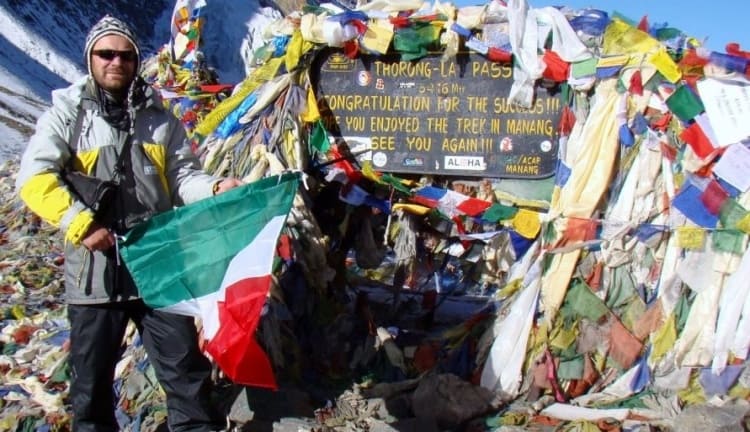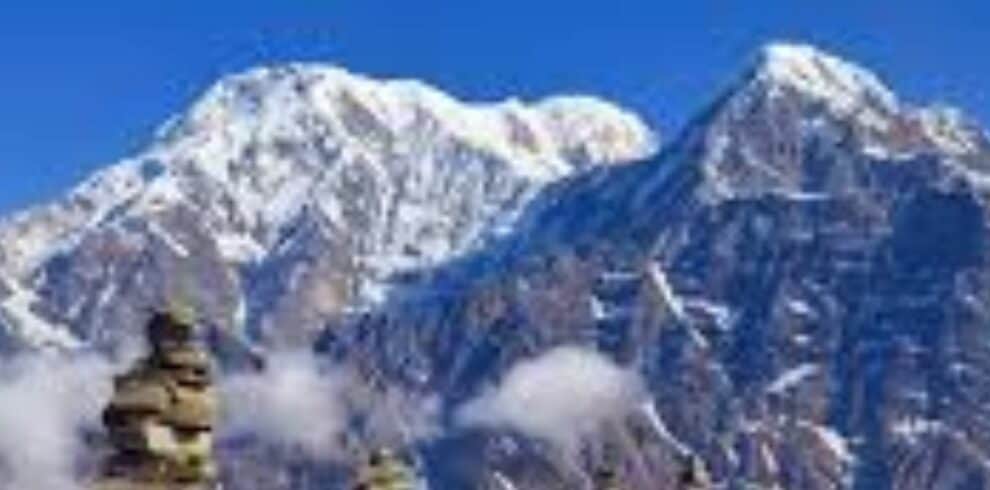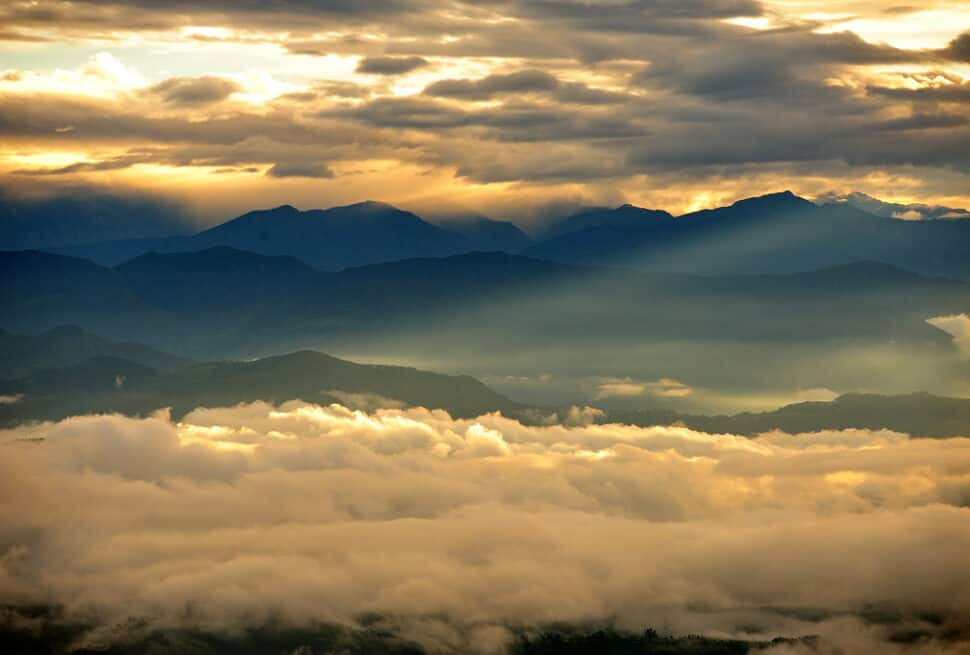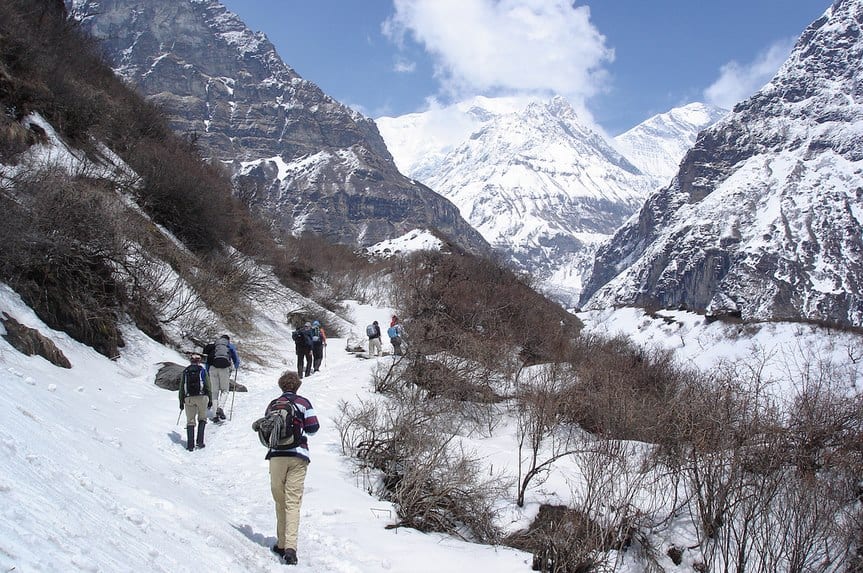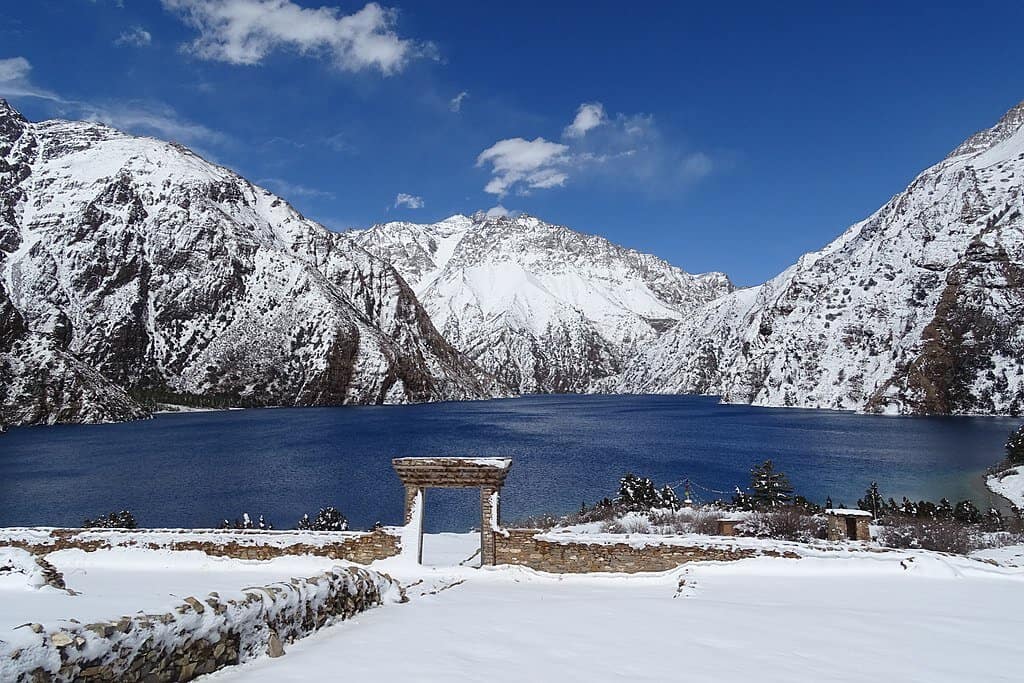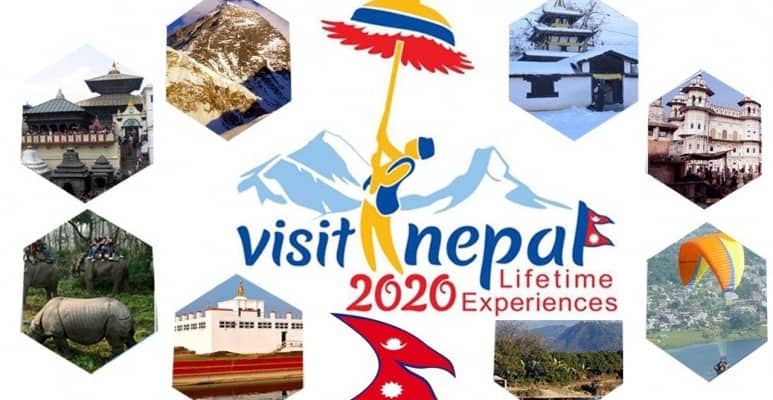Trekking in Nepal means there are no seasonal constraints throughout the year. Nepal is truly famous for its amazing places and for adventurous activities like hiking, paragliding, trekking, and mountaineering in the Himalayas.
Many trekkers have many questions that frequently strike their minds about trekking during the monsoon months. But still, Trekking in July is possible as there are various trekking trails in different regions of the country. Some of the trails lie in the rain shadow areas of the Himalayan areas of the country.
Generally, most people do not prefer trekking during July due to the rainy season. Despite this, Nepal still offers various options of trek routes and these trekking routes help trekkers to escape the monsoon trails and enjoy the best view as well.
Although most of the treks are officially open every season. Even in the month of July, it possible to trek in Nepal from Everest Base Camp to the Annapurna Region. However, it is important to get alert because there are risks of heavy rainfall and landslides on the way. And plus the views are usually covered in clouds.
Contents
- The weather condition in July in Nepal
- Best destinations for trekking in Nepal in October
- Everest Base Camp Trek
- Upper Mustang Trek
- Ghorepani Poon Hill Trek- 9 Days
- Annapurna Circuit Trek – 12 days
- Nar Phu Trek
- Mardi Himal Trek – 7 Days
- Some tips for trekking in Nepal in July
- Tips for trekking in Nepal in July
- Final Thoughts
- FAQs
The weather condition in July in Nepal
July is the transition month between summer and the monsoon season. The weather conditions of July in Nepal will be hot, humid, and wet. No doubt that due to the heavy monsoon weather, July month is considered as one of the least popular months to go trekking in Nepal. But this doesn’t mean trekking is completely halted this month. There are still many beautiful trekking routes that lie in the rain shadow area of the country. Even if it is the peak of monsoon season, trekkers can still enjoy trekking in Nepal in July. The condition of the weather is different at different altitudes. The lowland area of Nepal receives heavy rainfall and high temperature. Likewise, in Hilly region will have heavy rain and landslide as well, and the mountainous region of the country has an Alpine climate.
While doing the trekking in July then the trekkers need to get prepared to tackle the monsoon downpour. Mountains will be usually covered in clouds except during the morning time when the sky is clear after the heavy rainfall at night time.
| Location | Elevation (m) | Minimum temperature in July(°C) | Maximum temperature in July(°C) | Precipitation in July(mm) |
| Kathmandu | 1,400 | 19.1 | 28.1 | 379 |
| Pokhara | 900 | 21.5 | 29.1 | 876 |
| Biratnagar | 80 | 25.3 | 31.7 | 543 |
| Nepalgunj | 158 | 25.6 | 33.4 | 325 |
Best destinations for trekking in Nepal in October
1. Everest Base Camp Trek
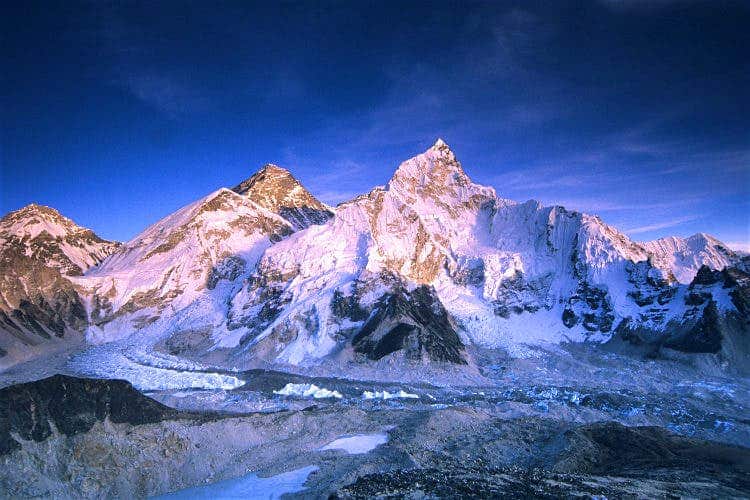
The Everest Base camp trek is a lifetime adventure for those who dream of soaring higher than the clouds. Stretch yourself in the lap of Himalayas and saturate your spirit in natural beauty and endurance beyond your thoughts. Trek to Everest Base Camp offers the trekker every kind of flavour, color, and beauty that they seek to see.
The region is the most vibrant and busiest at this season of the year, with many of the routes covered by flowering rhododendrons. Trekking to Everest Base Camp not only offers breathtaking views of the mountains but also provides the Sherpa culture, monastery and many more.
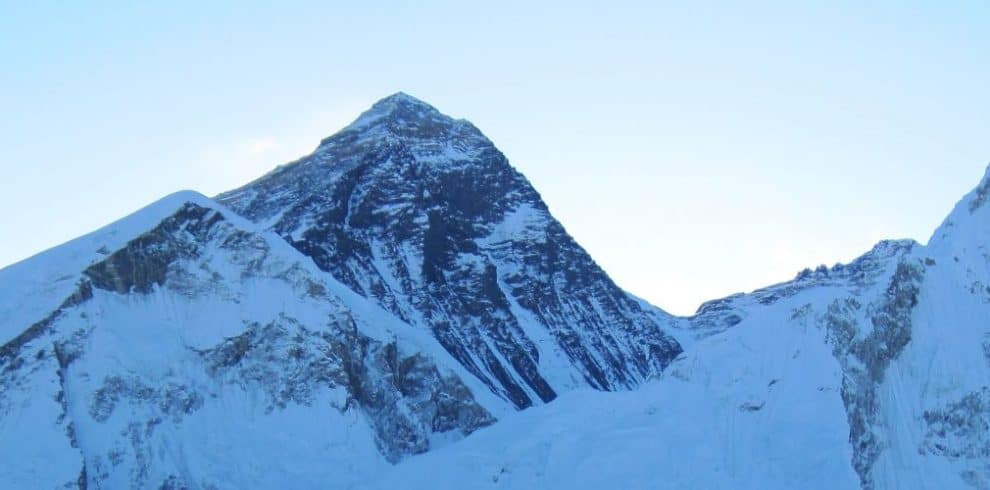
Everest Base Camp Trek is a classic trekking adventure in the foothills of the world’s highest mountain, Mount Everest. Trudging along the rugged trails of the Himalayas, decorated with mountains and landscapes, this trek is undoubtedly one of the best walks on earth. Regarded as the most popular trek in Nepal, Everest Base Camp Trek extends for 15 days. Along the way, you’ll get to marvel at some of the world’s highest massifs, including Mt. Everest, Lhotse, Ama Dablam, Thamserku, Cho Oyu, Pumori, Nuptse, and Makalu. Not only that, but this trek combines the glorious glimpses of the…
The 14-days Everest Base Camp Trek takes you to explore and visit important places such as; Lukla, Manche Bazaar, Dingboche, Tengboche, Everest Base Camp, and Kala Patthar.
| Location | Elevation (meters) | Minimum Temperature in July(°C) | Maximum Temperature in July(°C) | Precipitation in July (mm) |
| Lukla | 2,860 | 11 | 18.4 | 499 |
| Namche | 3,440 | 7.7 | 15.7 | 283 |
| Tengboche | 3,956 | 5.9 | 14.4 | 225 |
| Dingboche | 4,380 | 2.9 | 13 | 140 |
| Gorak Shep | 5,160 | 0.3 | 10.3 | 103 |
| Lobuche | 4,930 | 1.1 | 11.2 | 111 |
Highlights of the trek
- Breath-taking Himalayan flight view from Kathmandu to Lukla
- Explore Namche Bazaar, the gateway to Mt. Everest and also the trading center of the Solukhumbu region.
- Experience the spiritual moment in the highland monasteries placed with colorful prayer flags, prayer wheel, and mani walls.
- Visit the Tengboche Monastery, the largest monastery in the Khumbu region.
- Soaring the jaw-dropping mountain views of Mt. Cholatse, Mt. Nuptse, Taboche and many more.
- Hike to the Kala Pattar to get the awesome viewpoints for Mt. Everest.
- Trek to Everest Base Camp, the camp of the world’s highest peak in the world
Outline Itinerary
| Day | Description | Altitude from (Meter) | Altitude to (Meter) | Trekking Duration |
| 1 | Flight to Lukla -Trek to Phakding | 1,400 | 2,652 | 3-4 hours |
| 2 | Trek to Namche Bazaar from Phakding | 2,652 | 3,440 | 5-6 hours |
| 3 | Acclimatization Day trip to Namche Bazaar | 3,440 | 3,440 | – |
| 4 | Trek to Tengboche from Namche Bazaar | 3,440 | 3,956 | 5-6 hours |
| 5 | Trek from Tengboche to Dingboche | 3,956 | 4,380 | 4-5 hours |
| 6 | Acclimatization Day trip to Dingboche | 4,380 | 4,380 | – |
| 7 | Trek from Dingboche to Lobuche via Kongma La Pass (5,535 meters) | 4,380 | 4,938 | 10 hours |
| 8 | Trek from Lobuche to Gorak Shep and trek to EBC – back to Gorak Shep | 4,938 | 5,160 | 7-8 hours |
| 9 | Hike to Kala Patthar (5,643 meters) and Back to Lobuche | 5,160 | 4,938 | 6-7 hours |
| 10 | Trek from Lobuche to Dzongla | 4,938 | 4,830 | 3 hours |
| 11 | Trek from Dzongla to Gokyo Valley via Cho La Pass (5,420 meters) | 4,830 | 4,800 | 8-9 hours |
| 12 | Acclimatization Day at Gokyo Valley | 4,800 | 4,800 | – |
| 13 | Trek from Gokyo Valley to Marlung via Renjo La Pass (5,464 meters) | 4,800 | 4,210 | 7-8 hours |
| 14 | Trek from Marlung to Namche Bazaar | 4,210 | 3,440 | 5-6 hours |
| 15 | Trek from Namche Bazaar to Lukla | 3,440 | 2,800 | 7-8 hours |
| 16 | Fly from Lukla to Kathmandu | 2,800 | 1,400 | 40 mins |
2. Upper Mustang Trek
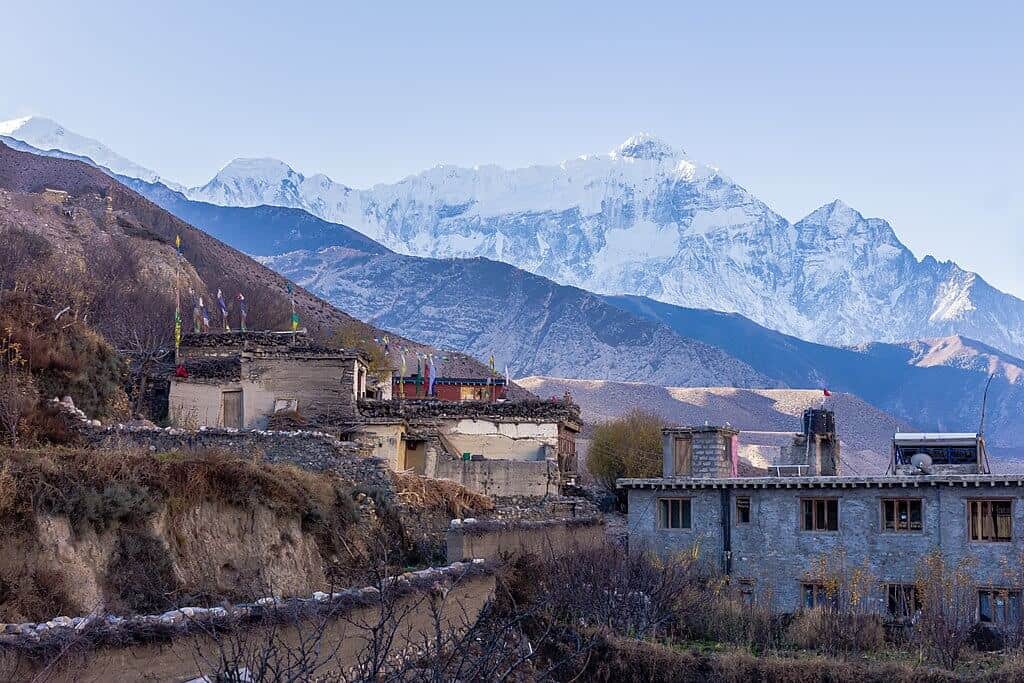
Upper Mustang is popularly known as the hidden kingdom of Nepal and also consider as mini Tibet. Upper Mustang is the perfect combination of landscape, nature, biodiversity, rich culture, ancient Buddhist monastery, caves and holds a great history. The area is technically a restricted area, which means trekkers need to get special permits to enter. That’s why the number of visitors is also limited.
Trekkers can enjoy the pristine landscape of the Upper Mustang region all year round. Bust still in the spring and autumn is considered the best season to explore the mysterious land of the Dhaulagiri and Annapurna area.
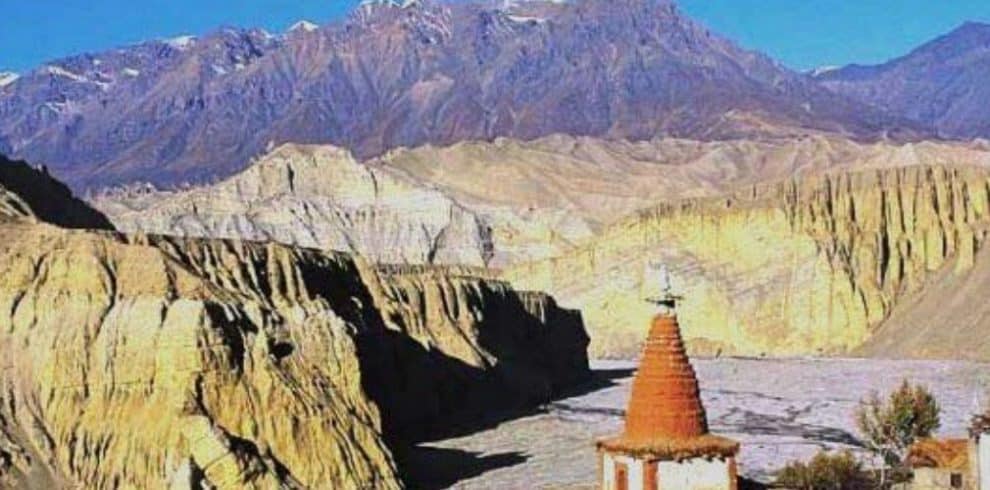
Trekking through Upper Mustang is an incredible experience. Trudging through vast stretches of red hills and steep cliffs, you will be rewarded with not only breathtaking views but also an excellent glimpse into the life and culture in this landscape. You will be greeted and cheered on by famous mountain peaks like Annapurna, Dhaulagiri, Nilgiri, and more. Not just that, but this trek also takes you to popular passes such as Taklam La, Darjori La, Yanda La, Ghami La, Nyi Pass, and more. The trek itself will take about 12 days of walking. Additionally, we will drive from Kathmandu…
Upper Mustang gives the trekker to get close to the Tibetian Buddhist culture, tradition and lifestyle. Lo-Manthang is surrounded by the oldest and most historical monasteries, seasonal vegetation, and antique ethnic Tibetian settlements. There are mainly two different festivals celebrated, horse running festivals and TIJI.
| Location | Elevation (meters) | Minimum Temperature in July(°C) | Maximum Temperature in July(°C) | Precipitation in July(mm) |
| Jomsom | 2,743 | 11.7 | 20.1 | 53 |
| Kagbeni | 2,804 | 10.8 | 19.3 | 58 |
| Chele | 3,050 | 10 | 18.6 | 60 |
| Lo Manthang | 3,840 | 6.4 | 15.5 | 68 |
Highlights of the Trek
- The trek visits Kagbeni, the gateway to Upper Mustang.
- The trek goes through icy masses, high pinnacles and elevated valleys.
- Visit Lo-Manthnag, the city of wall surrounded by ancient Buddhist monastery, museum, and cave.
- Spectacular Himalayan view and arid landscape.
- Explore the traditional Tibetian Buddhist ethnic communities culture and customs.
- Outstanding views of Dhaulagiri, Nilgiri, Mt. Annapurna and other beautiful snow-covered peaks.
Outline Itinerary
| Day | Description | Altitude from (Meters) | Altitude to (Meters) | Trekking Duration |
| 1 | Drive from Kathmandu to Pokhara | 1,400 | 900 | 6-7 hours |
| 2 | Fly from Pokhara to Jomsom and Trek to Kagbeni | 900 | 2,800 | 3 hours |
| 3 | Trek from Kagbeni to Chele | 2,800 | 3,050 | 6-7 hours |
| 4 | Trek from Chele to Syangmoche | 3,050 | 3,475 | 6 hours |
| 5 | Trek from Syangmoche to Ghami | 3,475 | 3,500 | 5 hours |
| 6 | Trek from Ghami to Charang | 3,500 | 3,560 | 4 hours |
| 7 | Trek from Charang to Lo Manthang | 3,560 | 3,770 | 5 hours |
| 8 | Excursion to Chhoser Cave | 3,770 | 3,770 | 3 hours |
| 9 | Trek from Lo Manthang to Drakmar | 3,770 | 3,800 | 6-7 hours |
| 10 | Trek from Drakmar to Ghiling | 3,800 | 3,860 | 5-6 hours |
| 11 | Trek from Ghiling to Chuksang | 3,860 | 3,050 | 5-6 hours |
| 12 | Trek from Chuksang to Jomsom | 3,050 | 2,715 | 5-6 hours |
| 13 | Fly from Jomsom to Pokhara | 2,715 | 900 | 30 mins |
| 14 | Drive from Pokhara to Kathmandu | 900 | 1,400 | 6-7 hours |
3. Ghorepani Poonhill Trek
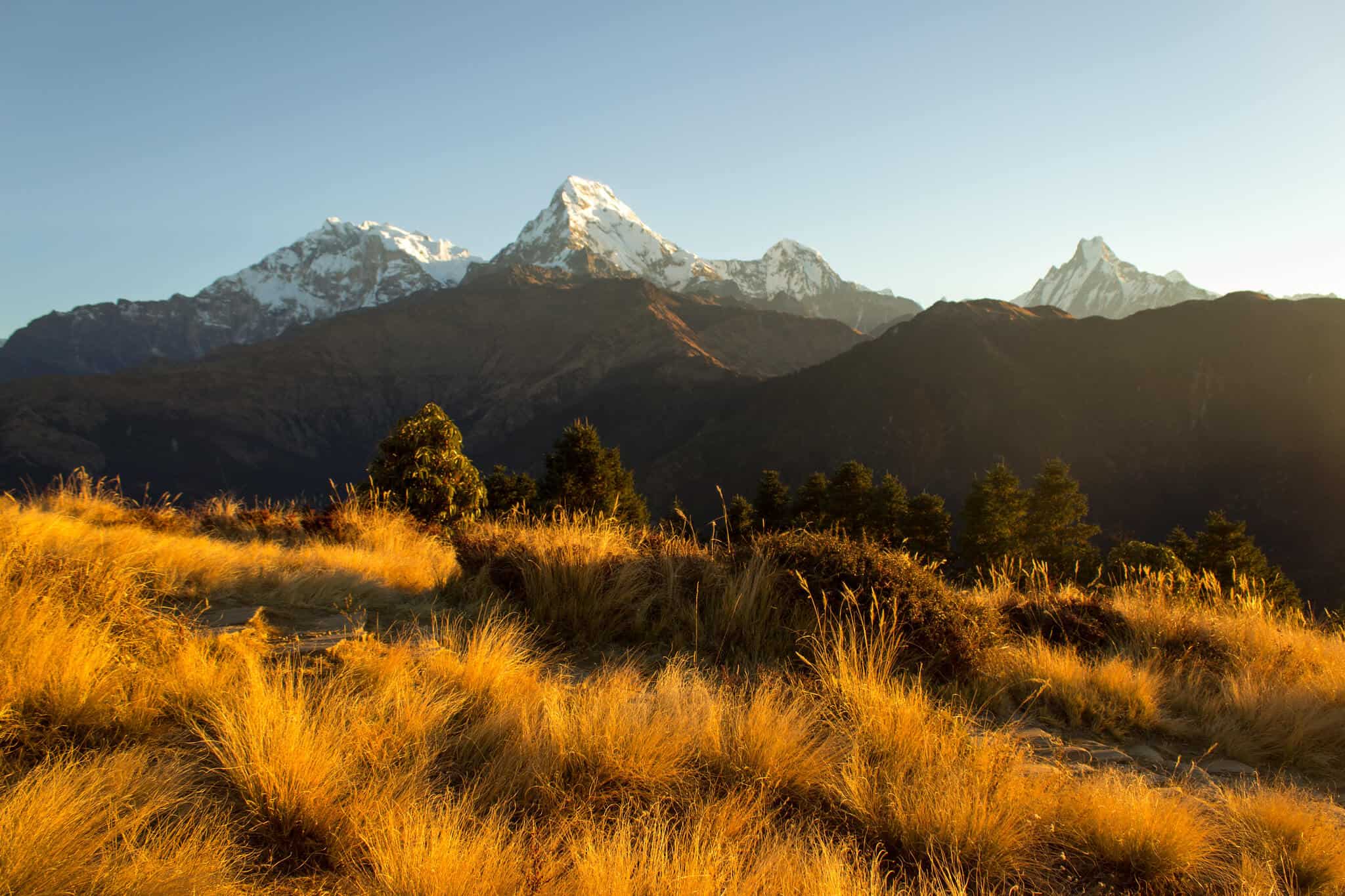
Ghorepani is a short trekking trail that offers trekkers to have a beautiful mountain view. Trekkers can catch the best view above 8000m which includes Mt. Annapurna, Mt. Dhaulagiri, Macchapuchhure, Nilgiri and many others. It is the best way to get the Himalayan panorama view in a very short period of time. This one-week trek is suitable for people of all ages and particularly good for families with children as well. This trek also provides traditional villages, rhododendron forests, icy waterfalls, patchwork valleys and beautiful mountain views on the way, making the hiking more interesting and memorable for the trekkers.
Ghorepani Poonhill treks give the trekkers an opportunity to explore the ethnic culture and lifestyle of the Gurung community. The unique culture and sound hospitality of the Gurung community live in the Ghorepani poon hill region.
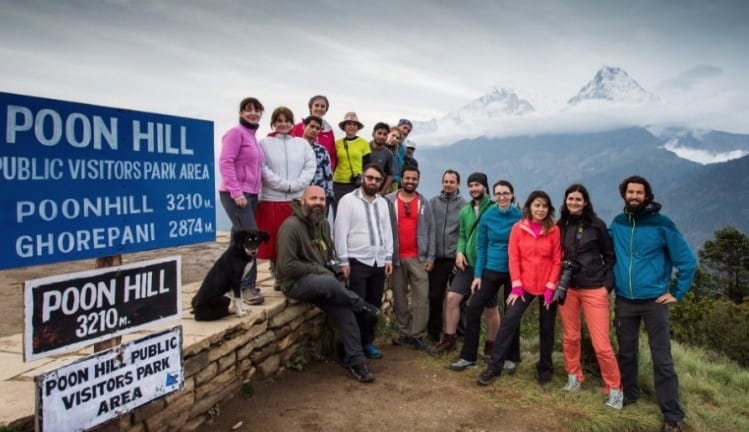
Ghorepani Poon Hill Trek is undoubtedly one of the best short treks in the Himalayas of Nepal. It is a classic teahouse adventure that stretches in the heart of Annapurna Sanctuary. This trek is ideal for those who are short on time but do not want to compromise on the Himalayas’ authentic experience. Traversing through the rugged trails of Annapurna Sanctuary, Ghorepani Poon Hill Trek integrates beautiful sceneries, rich Gurung culture, quaint villages, and rhododendron forests. In a short time, this trek takes you to the edge of the Himalayas. It provides an opportunity to witness the rustic mountain…
The climatic states of Ghorepani Poonhill are lovely throughout the entire year. While, in the several months of winter, the temperature of Ghorepani goes to zero. Likewise, trekkers need to watch the climate conjecture during the monsoon season. However, they can pack waterproof pants and coats to prevent heavy rainfall or storm.
| Location | Elevation (meters) | Minimum Temperature in July(°C) | Maximum Temperature in July(°C) | Rainfall (mm) |
| Ghorepani | 2,874 | 10.3 | 18.2 | 143 |
| Ghandruk | 1,940 | 14.7 | 22.8 | 734 |
| TikheDhunga | 1,570 | 16 | 23.6 | 543 |
Highlights of the trek
- Splendid snow-capped mountain views of Annapurna, Dhaulagiri, Machhapuchhre, Nilgiri and others
- Mesmerizing scenes of sunrise and sunset on the Annapurna Himalayan Ranges from Poonhill
- The artistic stone stairs of the Ulleri Village
- Explore Gurung Villages and their unique cultures and lifestyles
Outline Itinerary
| Day | Itinerary | Altitude from (Meters) | Altitude to (Meters) | Trekking Duration (Hours) |
| 1 | Drive from Kathmandu to Pokhara | 1,400 | 900 | – |
| 2 | Drive from Pokhara to Nayapul, then trek to TikheDhunga | 900 | 1,570 | 6-7 |
| 3 | Trek from TikheDhunga to Ghorepani | 1,570 | 2,850 | 5-6 |
| 4 | Hike to Poon Hill, then trek to Tadapani | 2,850 | 2,700 | 4-5 |
| 5 | Trek to Tadapani to Ghandruk | 2,700 | 1,940 | 3-4 |
| 6 | Trek from Ghandruk to Nayapul (1,570m), then drive to Pokhara | 1,940 | 900 | 5-6 |
| 7 | Drive from Pokhara to Kathmandu | 900 | 1,400 | – |
4. Annapurna Circuit Trek
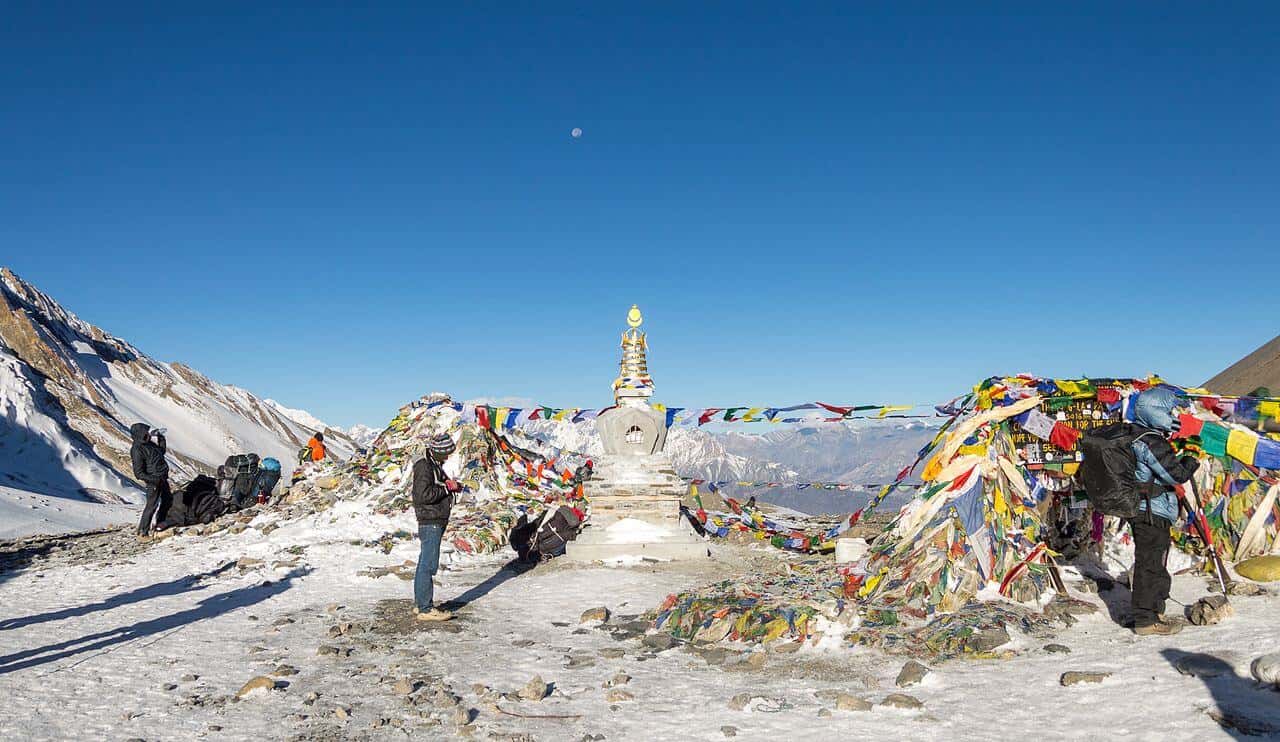
Annapurna Circuit is arguably the most popular trek in the Annapurna Sanctuary. Since it officially opened for foreign travelers in 1977, this trek has captivated thousands of trekkers from all over the world.
Annapurna Circuit Trek provides trekkers with an opportunity to revolve around the entire mountain of Annapurna in an anti-clockwise direction. Starting at 800 meters, the adventure of Annapurna Circuit takes you up to 5,416 meters at Thorong La Pass.
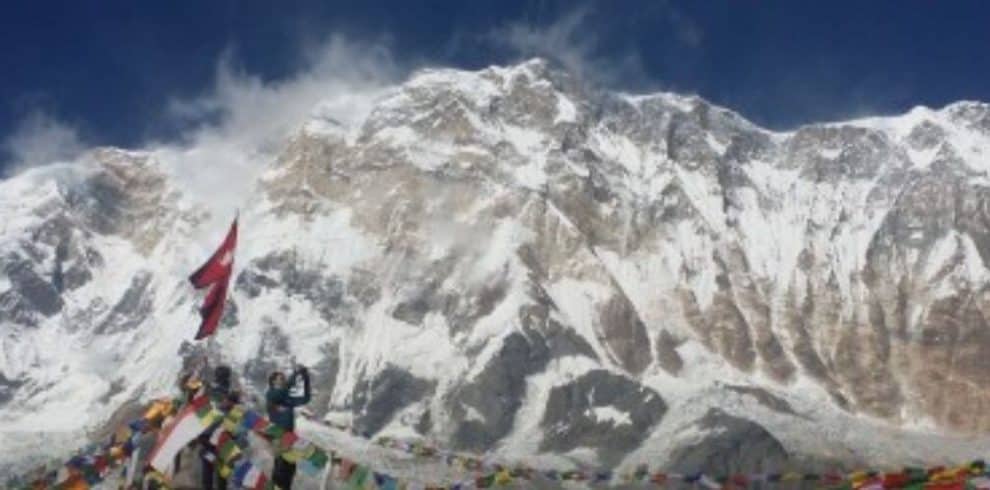
Annapurna Circuit Trek is the classic trek in the Himalayas. Annapurna is a Himalayan region in north-central Nepal famed for its magnificent views, rough landscape, and isolated mountain settlements, desolate high mountains, hot springs, Buddhist and Hindu Temples and the stunning views of Annapurna Summit. The Annapurna Circuit Trek is still without doubt one of the best treks anywhere in the world despite inroads being developed in the region. The overall length of the trip ranges between 160–230 kilometers (100–145 mi), depending on where motorized transportation is used and where the trek concludes. This hike traverses two…
This variation offers massive diversity in the landscape and culture. Walking along the ever-changing terrains, quaint villages, and high passes decorated with the picturesque sight of the mountains makes this trek truly an adventure of a lifetime.
| Location | Elevation (meters) | Minimum Temperature in July(°C) | Maximum Temperature in July(°C) | Precipitation in July (mm) |
| Pokhara | 900 | 21.5 | 29.1 | 876 |
| Jagat | 1,300 | 18.1 | 26.3 | 660 |
| Dharapani | 1,860 | 18.6 | 26.3 | 470 |
| Manang | 3,540 | 7.7 | 16.1 | 80 |
| Marpha | 2,670 | 11.6 | 19.9 | 59 |
| Beni | 830 | 14.7 | 22.8 | 492 |
Highlights of the Trek
- Trek across one of the highest navigable passes — Thorong La Pass at 5,416 meters.
- Visit the holy Hindu pilgrimage at Muktinath.
- Glorious sunrise with 360-degree vistas of the mountains including Annapurna, Manaslu, and Dhaulagiri from Poon Hill.
- Traverse through the world’s deepest gorge at Kali Gandaki.
- Submerge in the natural hot springs at Tatopani.
Outline Itinerary
| Day | Description | Altitude from (Meters) | Altitude to (Meters) | Trekking Duration |
| 1 | Drive from Kathmandu to Khudi | 1,400 | 800 | 8 hours |
| 2 | Trek from Khudi to Sirung | 800 | 2,220 | 6-7 hours |
| 3 | Trek from Sirung to Jagat | 2,220 | 1,300 | 6-7 hours |
| 4 | Trek from Jagat to Dharapani | 1,300 | 1,860 | 7-8 hours |
| 5 | Trek from Dharapani to Chame | 1,860 | 2,710 | 5-6 hours |
| 6 | Trek from Chame to Pisang | 2,710 | 3,300 | 5-6 hours |
| 7 | Trek from Pisang to Manang | 3,300 | 3,540 | 6-7 hours |
| 8 | Acclimatization Day at Manang | 3,540 | 3,540 | 5 hours |
| 9 | Trek from Manang to Yak Kharka | 3,540 | 4,110 | 3-4 hours |
| 10 | Trek from Yak Kharka to Thorong Phedi | 4,110 | 4,600 | 3-4 hours |
| 11 | Trek from Thorong Phedi to Muktinath via Thorong La Pass (5,140 meters) | 4,600 | 3,710 | 7-8 hours |
| 12 | Trek from Muktinath to Marpha | 3,710 | 2,670 | 5-6 hours |
| 13 | Trek from Marpha to Kalopani | 2,670 | 2,530 | 5-6 hours |
| 14 | Trek from Kalopani to Tatopani | 2,530 | 1,200 | 6-7 hours |
| 15 | Trek from Tatopani to Ghorepani | 1,200 | 2,850 | 6-7 hours |
| 16 | Trek to Nayapul (1,070 meters) via Poon Hill (3,210 meters) and Drive to Pokhara | 2,850 | 900 | 7-8 hours |
| 17 | Drive from Pokhara to Kathmandu | 900 | 1,400 | 6-7 hours |
5. Nar Phu Valley Trek
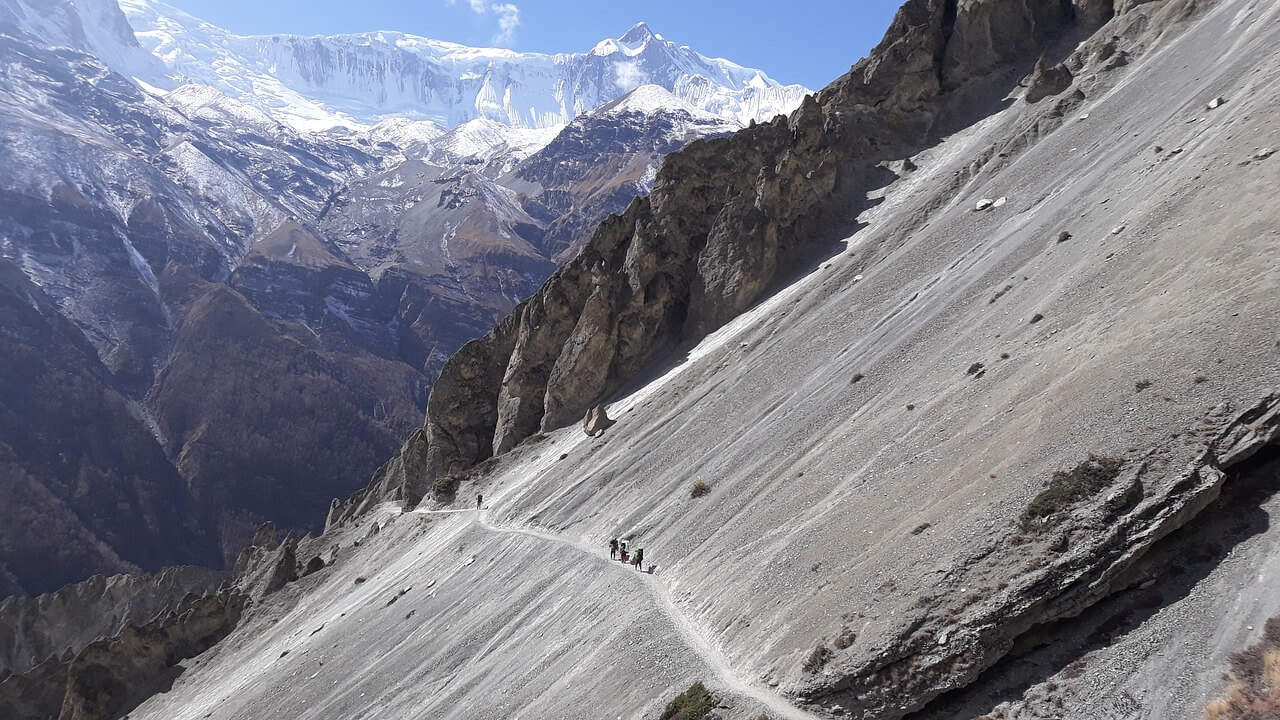
Nar Phu is a hidden gem that is situated between the Annapurna and Manaslu regions. Nar Phu Valley Trek is a wild adventurous experience that is unforgettable. It is the best destination for trekkers to explore the virgin land that has a mixture of raw Himalayan nature and ancient Buddhist culture.
Similarly, travelers can also enjoy the gorgeous views of Himlung Himal, Annapurna II (7937m), Gangapurna (7455m) and Tilicho peak(7134m). The route also provides an opportunity to explore the Tibetan heritage which embodies the tradition of yak herding, harvesting indigenous herbs for medicine.
The trek to Nar Phu Valley is possible in every season except winter. In the winter (December-February) the high pass could be disrupted due to the heavy snowfall. In the monsoon season (June-August) is possible, although the road access in the mountains area could be disrupted by landslides.
| Location | Elevation (meters) | Minimum Temperature in July (°C) | Maximum Temperature in July(°C) | Precipitation in July (mm) |
| Kathmandu | 1,400 | 19.1 | 28.1 | 379 |
| Pokhara | 900 | 21.5 | 29.1 | 876 |
| Jagat | 1,340 | 18.1 | 26.3 | 660 |
| Jomsom | 2,743 | 11.7 | 20.1 | 53 |
| Manang | 3,517 | 7.7 | 16.1 | 80 |
Highlights of the trek
- Venture into ‘the hidden valley trek’ of Nepal that only a few travelers get to see
- The trail passes through beautiful woods, narrow canyon, and wide waterfalls.
- Get a good view of the magnificent Nar Phedi Monastery
- Experience the ancient Tibetian culture and lifestyle
Outline Itinerary
| Day | Description | Altitude from (Meters) | Altitude to (Meters) | Trekking Duration |
| 1 | Drive from Kathmandu to Koto via Besisahar (820 meters) | 1,400 | 2,600 | 8 hours |
| 2 | Trek from Koto to Meta | 2,600 | 3,560 | 6-7 hours |
| 3 | Trek from Meta to Phu | 3,560 | 4,080 | 6-7 hours |
| 4 | Acclimatization day at Phu | 4,080 | 4,080 | – |
| 5 | Trek from Phu to Nar Phedi | 4,080 | 3,490 | 7 hours |
| 6 | Trek from Nar Phedi to Nar Village | 3,490 | 4,110 | 3 hours |
| 7 | Trek from Nar Village to Ngawal via Kang La Pass (5,240 meters) | 4,110 | 3,650 | 8 hours |
| 8 | Trek from Ngawal to Pisang (3,300 meters) and Drive to Besisahar | 3,650 | 820 | 4 hours |
| 9 | Drive from Besisahar to Kathmandu | 820 | 1,400 | 5-6 hours |
6. Mardi Himal Trek
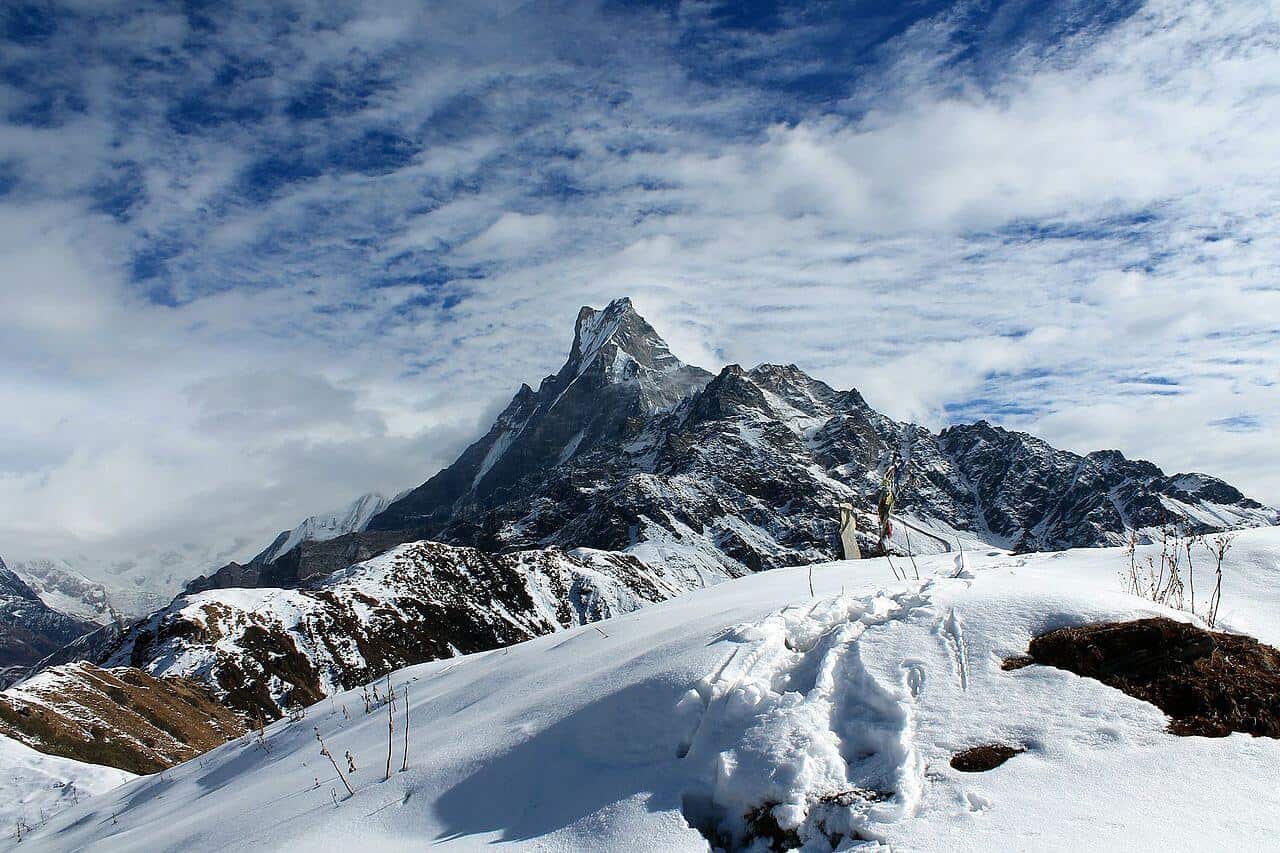
Mardi Himal is a relatively new and less crowded trekking destination in Nepal which is situated in the lap of the Annapurna region. Mardi Himal trek is the perfect trekking destination for those who want to escape the crowd and wants to be lost in the beauty of nature.
This trek offers an adventurous trail where the trekkers can enjoy the beautiful view of Annapurna Ranges, Dhaulagiri, Manaslu, and Machhapuchhre. Besides the breathtaking natural view, this trek also offers the pristine social and customary encounters of the local ethnic groups.
Although the clouds and rain make the monsoon season unpopular for trekking. But it is an unpredictable adventure that makes the trek more exciting. Trekkers need to take some preventive measures to avoid rainfall effects.
Highlights of this trek
- High Camp of Mardi Himal at 4,500 meters
- Eye-catching views of Machhapuchhre, Annapurna, Dhaulagiri, Manaslu, and Mardi Himal
- Unique culture and lifestyle of ethnic groups in the villages
- Explore the remote and old villages of Siding and Lwang
- Exotic flora and fauna varieties can be seen along the trekking trail
| Location | Elevation (meters) | Minimum Temperature in July(°C) | Maximum Temperature in July(°C) | Precipitation in July (mm) |
| Phedi | 1,130 | 18 | 24.8 | 577 |
| Kathmandu | 1,400 | 19.1 | 28.1 | 379 |
| Pokhara | 900 | 21.5 | 29.1 | 876 |
Outline Itinerary
| Day | Itinerary | Altitude from (Meters) | Altitude to (Meters) | Trekking Duration (Hours) |
| 1 | Drive from Kathmandu to Pokhara | 1,400 | 900 | – |
| 2 | Drive from Pokhara to Phedi, then trek to Pothana | 900 | 1,950 | 4 |
| 3 | Trek from Pothana to Forest Camp | 1,950 | 2,500 | 5 |
| 4 | Trek from Forest Camp to Low Camp | 2,500 | 3,210 | 5 |
| 5 | Trek from Low Camp to High Camp | 3,210 | 3,580 | 4 |
| 6 | Trek from High Camp to Mardi Himal Base Camp | 3,580 | 4,450 | 7 |
| 7 | Trek from Mardi Himal Base Camp to Siding Village | 4,450 | 1,885 | 7 |
| 8 | Trek from Siding Village to Lwang Village | 1,885 | 1,460 | 5 |
| 9 | Drive from Lwang Village to Pokhara | 1,460 | 900 | – |
| 10 | Drive from Pokhara to Kathmandu | 900 | 1,400 | – |
Some tips for trekking in Nepal in July
- Carry waterproof bags to protect trekking gears
- Hire an experienced trekking guide
- Start the trek early to have great views of the mountains ranges
- Be updated about the weather forecast
- Pre-Book lodge or tea houses for spending the night on trekking days to avoid bad weather condition
- Book extra days for trekking to prevent from the bad weather
- Carry anti-insect cream or ointment to deal with annoying leeches and mosquitoes
Tips for trekking in Nepal in July
Pack the rain gear
While planning for trekking in July it is important to prepare for rain protection gear. The outer wearables like shoes, jackets, and trousers need to be waterproof. You can use a raincoat to cover yourself in case of rainfall.
You also need to carry a waterproof bag to protect your stuff. You can also take extra precautions and keep items like documents, electronic equipment, and clothes inside ziplock bags.
Don’t forget bug repellents.
During June, the wet and muggy weather attracts a lot of annoying bugs like leeches, slugs, and mosquitoes. It may ruin your trekking experience. Pack bug repellents and ointments to protect yourself from these bugs.
Avoid long treks that don’t fall in rain shadow regions
Trekking in the monsoon means a lot of rain. So, it is better to avoid the long treks and try to get into the rain shadow areas. As the trails will be wet and slippery this might be quite risky to trek. Heavy rain showers may also end up pausing your trek.
Some of the places like Upper Mustang, Manaslu, or Nar Phu are better for trekking in the monsoon season as it falls in the rain shadow regions. These locations receive little rainfall throughout the year and are favourable for trekking.
Carry a trekking pole.
A trekking pole is a very helpful piece of equipment while trekking. It can help while climbing steep slopes and while descending as well. It may also prove to be quite useful to trek through wet and slippery trails during the month of June.
Wear clothes made of high-wicking fabrics.
Try to avoid fabrics like cotton and jeans for trekking, especially during the monsoon season, as it takes a long time to dry and easily gets wet as well. Clothes made out of polyester or merino wool have excellent wicking properties. These keep the moisture away from your body and keep the body dry. Wet clothes make the body cold, and this might be caught you the common cold or hypothermia.
Final Thoughts
July falls in the middle of Nepal’s monsoon season, that’s why this season is the least visited month of the year. The monsoon months of June through August are the most hurdle season to go for trekking. The trekkers will face heavy rains that wash out bridges and the roads or paths may be disrupted. Trekkers won’t get the chance to see the views, transportation delays, and leeches in abundance. Even after this all difficulty there are some regions where trekkers can explore the great Himalaya trails lie in the rain shadow areas. The best part of trekking during this season is that trekkers can freely explore and enjoy trekking without any crowd.
FAQs
1. Is July the best time to visit Nepal?
As compared with the other seasons like fall and spring, monsoon is not a choice for trekkers. Monsoon season in Nepal starts from mid-June to mid-September. July is not considered the best time to visit in Nepal like other seasons. But, still, Nepal’s geography never disappoints travel lovers to explore the beauty of Nepal. There are some places like great Himalaya trails lie in the rain shadow areas and short trekking around the Kathmandu valley are also some of the best options to visit Nepal.
2. Are accommodations available during July?
Yes. Accommodation will be available in most parts of the trekking areas. Most trekking routes that do not lie in the rain shadow regions should be avoided. Because due to monsoon, these regions do not receive many travelers and therefore the teahouses and hotels may stay closed.
Most of the hotels or teahouses will be open around the rain shadow areas. So you can get comfortable beds, delicious local foods, and squat toilets. Some teahouses offer WiFi services but you may have to pay extra charges to use it.
3. Do I need rain protection gear for trekking in July?
Yes. You will need to pack some rain protection gear during June. Although the rain shadow regions do not receive much rainfall, the lower regions do receive rain almost every day. Pack raincoats and rain covers for your backpack.
4. What is the weather like in July for trekking in Nepal?
July is one of the hot and wet months of the year with rainy days to witness. The hilly and Terai region receives heavy rainfall and storm as well. Whereas, the Himalayas have an alpine climate. The temperature is usually around 25 to 27-degree Celcius on average.

